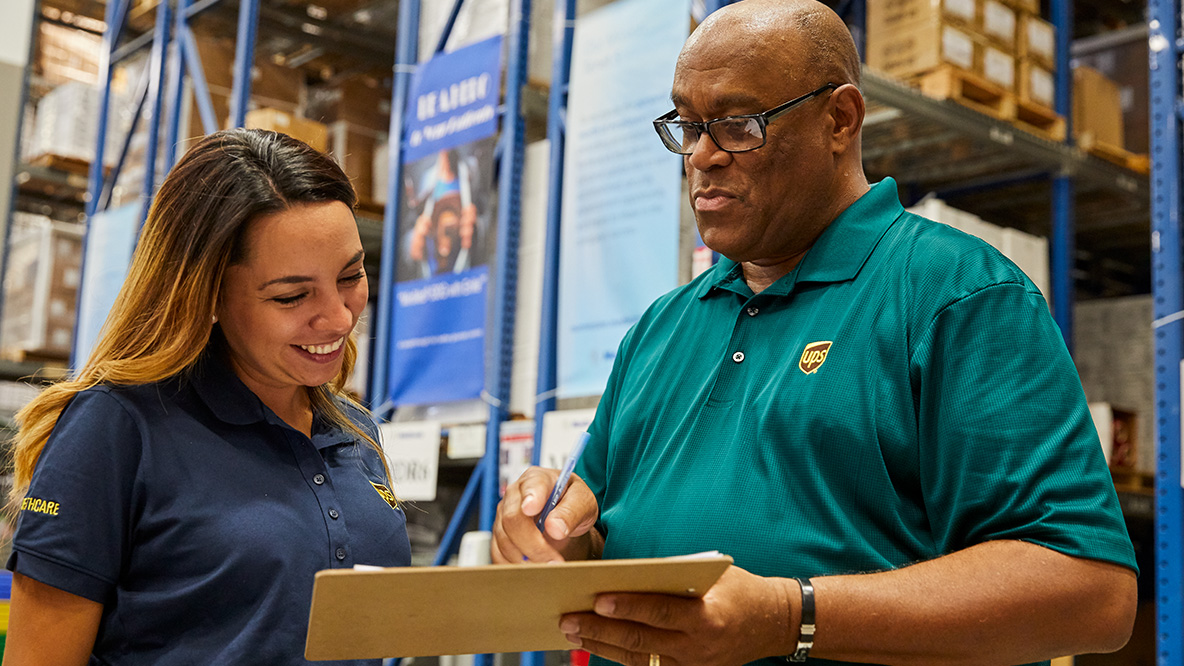Hey there, folks! If you're reading this, chances are you've heard the big news that's making waves in the logistics world. UPS, the global shipping giant, has decided to cut jobs and close 70 sites. Yeah, you read that right—70 locations! This move is sending shockwaves through the industry, and it's worth diving deep into what's happening and why. So buckle up, because we're about to break it all down for you.
Now, let's be real here. The logistics industry is no stranger to changes, but a decision like this? That's a game-changer. With the rise of e-commerce and shifting consumer demands, companies like UPS are under constant pressure to adapt. This isn't just about cost-cutting; it's about staying relevant in an ever-evolving market. But what does this mean for employees, customers, and the broader economy? Stick around, and we'll answer all your burning questions.
Before we dive into the nitty-gritty, let's set the stage. UPS isn't just any company—it's a powerhouse that delivers millions of packages every day. From small businesses to multinational corporations, UPS plays a critical role in the global supply chain. But even giants need to pivot sometimes, and that's exactly what they're doing now. So, without further ado, let's get into the details of why UPS is cutting jobs and closing sites.
Read also:Why Happy Monday Should Be Your New Mantra
Understanding the Big Picture: Why Is UPS Taking These Steps?
Alright, let's cut to the chase. UPS isn't doing this for fun—or because they woke up one morning and thought, "Hey, let's shake things up!" No, this is a strategic decision driven by a combination of factors. First off, the company is facing intense competition from players like Amazon, FedEx, and DHL. These competitors are investing heavily in technology, automation, and last-mile delivery solutions, and UPS knows it has to keep up.
Secondly, there's the issue of efficiency. Let's face it—running 70 underperforming sites doesn't make sense when resources could be better allocated elsewhere. By closing these locations, UPS can streamline operations, reduce costs, and focus on areas that truly drive growth. It's a tough pill to swallow, but sometimes tough decisions are necessary for long-term success.
But wait, there's more! The global economy is still recovering from the pandemic, and supply chain disruptions continue to be a headache for many businesses. Add to that rising fuel costs, labor shortages, and inflation, and you've got a recipe for financial challenges. UPS is simply responding to these realities in a way that aligns with their business goals.
What Does This Mean for Employees?
This is the part that hits closest to home. When a company announces job cuts, it's not just numbers on a spreadsheet—it's real people whose lives are impacted. So, what's the deal with the workforce? According to reports, UPS is planning to eliminate around 3,000 positions across the United States. That's a significant number, and it's bound to cause anxiety among employees.
But here's the thing: UPS isn't leaving their workers high and dry. The company has a long history of taking care of its employees, and they're offering severance packages, retraining programs, and opportunities for redeployment within the organization. While it's not a perfect solution, it's a step in the right direction.
How Are Employees Reacting?
Let's be honest—no one likes hearing that their job might be on the line. But how are employees reacting to this news? Some are understandably upset, while others are taking it in stride. One worker we spoke to said, "It's tough, but I get it. The world is changing, and UPS has to change with it." Another added, "I'm worried about my future, but I'm grateful for the support the company is offering."
Read also:Aisha Hinds The Rising Star Of Hollywood Whorsquos Making Waves
It's worth noting that union representatives are also involved in this process. The International Brotherhood of Teamsters, which represents many UPS employees, is working closely with the company to ensure that workers are treated fairly. This collaboration is crucial for maintaining trust and transparency during a challenging time.
Impact on Customers: Will Your Packages Still Arrive on Time?
Now, let's talk about the elephant in the room: customers. If you're one of the millions of people who rely on UPS for shipping, you're probably wondering how this will affect your deliveries. The short answer? It shouldn't. At least, not significantly.
UPS is confident that their remaining network can handle the demand without any major disruptions. In fact, they're investing in technology and infrastructure to make the process even smoother. Think automated sorting systems, advanced tracking tools, and more efficient delivery routes. These innovations will help ensure that your packages still arrive on time, even with fewer locations in operation.
What About Pricing?
Here's the million-dollar question: will this decision lead to higher prices for customers? The jury's still out on that one. While UPS hasn't announced any plans to increase rates, it's possible that some costs could be passed on to consumers. However, the company is committed to maintaining competitive pricing, so any changes will likely be minimal.
70 Sites Closing: A Closer Look at the Locations
Okay, so we know that 70 sites are closing, but which ones exactly? While UPS hasn't released a complete list, they have provided some details. The closures will primarily affect smaller facilities and distribution centers that aren't as crucial to their overall operations. Think of it as trimming the fat to make the company leaner and more efficient.
Here's a quick breakdown of the types of locations being shut down:
- Small-scale sorting facilities
- Underutilized distribution centers
- Warehouses with limited capacity
Don't worry, though—major hubs and key locations will remain open and fully operational. In fact, UPS is investing heavily in upgrading these sites to handle increased demand.
Will This Affect Local Communities?
Absolutely. Closing 70 sites means that some communities will lose a significant employer and economic driver. Local governments, businesses, and residents are understandably concerned about the impact. That said, UPS is working with affected communities to minimize the fallout. They're offering support programs, job fairs, and partnerships with other companies to help displaced workers find new opportunities.
The Role of Technology: How Automation is Changing the Game
Let's talk tech. One of the reasons UPS is able to close these sites and reduce their workforce is because of advancements in automation. Robots, AI, and machine learning are transforming the logistics industry, and UPS is at the forefront of this revolution.
Take their new automated sorting facilities, for example. These state-of-the-art centers can process thousands of packages per hour with minimal human intervention. It's a game-changer for efficiency and accuracy. Plus, it allows UPS to focus on higher-value tasks, like customer service and last-mile delivery.
Of course, there's always a downside. Automation can lead to job displacement, and that's a valid concern. But it's also creating new opportunities in fields like robotics, software development, and data analysis. The key is to embrace change and adapt to the evolving landscape.
What Does the Future Hold?
The future of logistics is bright—but it's also uncertain. As technology continues to advance, companies like UPS will need to balance innovation with responsibility. That means investing in their workforce, prioritizing sustainability, and staying ahead of the competition.
Financial Implications: What Do Analysts Say?
Okay, let's talk numbers. How is Wall Street reacting to this news? Analysts are cautiously optimistic. While some are concerned about the short-term impact on profits, others see this as a smart move in the long run. By cutting costs and streamlining operations, UPS is positioning itself for future growth.
Here's a quick look at the financials:
- Cost savings: Estimated at $500 million annually
- Investment in technology: $1 billion over the next five years
- Revenue growth: Projected to increase by 3-5% annually
Of course, these projections are subject to change, but they give us a good idea of where UPS is headed.
What About Stock Prices?
UPS stock took a slight dip when the news broke, but it quickly rebounded. Investors seem to be buying into the company's vision, and that's a good sign. As always, it's important to take a long-term view when evaluating stock performance. If UPS can execute their plan successfully, there's no reason why they can't continue to thrive in the years to come.
Global Impact: How This Affects the Broader Economy
Finally, let's zoom out and look at the bigger picture. UPS isn't just a logistics company—they're a bellwether for the global economy. When they make big moves like this, it sends ripples through the entire system. So, what does this mean for the broader economy?
On one hand, it could signal a shift toward more efficient, technology-driven operations. That's generally a good thing for productivity and growth. On the other hand, it raises concerns about job displacement and income inequality. As automation becomes more widespread, it's crucial for governments and businesses to work together to address these issues.
What Can We Learn From This?
The UPS story is a powerful reminder of the importance of adaptability. In today's fast-paced world, companies that fail to evolve risk being left behind. But change doesn't have to be scary—it can be an opportunity for growth and innovation. By embracing new technologies, investing in their workforce, and staying true to their values, companies like UPS can continue to thrive in an ever-changing landscape.
Conclusion: What's Next for UPS?
Well, there you have it—the lowdown on UPS cutting jobs and closing 70 sites. It's a bold move that reflects the challenges and opportunities facing the logistics industry today. While there are certainly challenges ahead, UPS is well-positioned to navigate them successfully.
So, what can you do? If you're an employee, take advantage of the resources and support programs offered by UPS. If you're a customer, rest assured that your packages will still arrive on time. And if you're an investor, keep an eye on the company's progress as they execute their strategic plan.
Before we wrap up, let's leave you with a call to action. Got thoughts or questions about this story? Drop a comment below and share your perspective. And if you found this article helpful, don't forget to share it with your friends and colleagues. Together, we can keep the conversation going!
Thanks for reading, and stay tuned for more updates on the world of logistics and beyond!
Table of Contents


